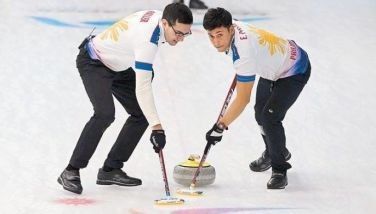BFAR expert develops new seaweed growing method
March 12, 2006 | 12:00am
A simple but innovative way of growing seaweeds continues to excite interest in the aquaculture sector.
Called "Modified Triangular Method of Seaweed Farming," it was developed by Said Kalbi, senior aquaculturist of the Department of Agriculture-Bureau of Fisheries and Aquatic Resources-Region 9 (DA-BFAR-9) based in Zamboanga City.
The method placed second in Aquatic Technology Competition and Marketplace (ATCOM) organized by the Los Baños-based Department of Science and Technology-Philippine Council for Aquatic and Marine Research and development (DOST-PCAMRD) last Jan. 30-31. Kabli received P50,000 and a trophy.
ATCOM was among the highlights of the program marking the observance of PCAMRD’s 18th anniversary.
The technology earlier won award at the Second Agriculture and Fisheries Technology Forum organized by the DA-Bureau of Agricultural Research (BAR) in Diliman, Quezon City.
The environment-friendly seaweed production system uses polyethylene or nylon ropes which are formed into a series of triangles as cultivation line fixed five meters from the bottom of the seacoast through a wooden stake embedded firmly to the seabed.
A float (float ball or empty plastic container) is provided at the triangle’s tip to add more buoyancy. The seaweed seedlings are planted at the sides of the triangles.
The technology, as explained by Kalbi, enables seaweed growers to plant more in a given area, ranging from 100,000 to 150,000 seedlings per hectare.
A hectare can yield 45 tons of fresh seaweeds in just 45 days. The ordinary system yields only about 24 tons per hectare.
Based on Kalbi’s study, the triangular method is more efficient in terms of harvest volume and cost of production compared with other techniques.
It also fits well into the traditional and cultural values of the country’s coastal inhabitants. – Rudy A. Fernandez
Called "Modified Triangular Method of Seaweed Farming," it was developed by Said Kalbi, senior aquaculturist of the Department of Agriculture-Bureau of Fisheries and Aquatic Resources-Region 9 (DA-BFAR-9) based in Zamboanga City.
The method placed second in Aquatic Technology Competition and Marketplace (ATCOM) organized by the Los Baños-based Department of Science and Technology-Philippine Council for Aquatic and Marine Research and development (DOST-PCAMRD) last Jan. 30-31. Kabli received P50,000 and a trophy.
ATCOM was among the highlights of the program marking the observance of PCAMRD’s 18th anniversary.
The technology earlier won award at the Second Agriculture and Fisheries Technology Forum organized by the DA-Bureau of Agricultural Research (BAR) in Diliman, Quezon City.
The environment-friendly seaweed production system uses polyethylene or nylon ropes which are formed into a series of triangles as cultivation line fixed five meters from the bottom of the seacoast through a wooden stake embedded firmly to the seabed.
A float (float ball or empty plastic container) is provided at the triangle’s tip to add more buoyancy. The seaweed seedlings are planted at the sides of the triangles.
The technology, as explained by Kalbi, enables seaweed growers to plant more in a given area, ranging from 100,000 to 150,000 seedlings per hectare.
A hectare can yield 45 tons of fresh seaweeds in just 45 days. The ordinary system yields only about 24 tons per hectare.
Based on Kalbi’s study, the triangular method is more efficient in terms of harvest volume and cost of production compared with other techniques.
It also fits well into the traditional and cultural values of the country’s coastal inhabitants. – Rudy A. Fernandez
BrandSpace Articles
<
>
- Latest
Latest
Latest
May 14, 2024 - 3:43pm
By Ian Laqui | May 14, 2024 - 3:43pm
April 10, 2024 - 5:12pm
By Ian Laqui | April 10, 2024 - 5:12pm
March 4, 2024 - 3:32pm
By Ian Laqui | March 4, 2024 - 3:32pm
March 4, 2024 - 2:12pm
By Kristine Daguno-Bersamina | March 4, 2024 - 2:12pm
February 17, 2024 - 2:31pm
February 17, 2024 - 2:31pm
Recommended



























